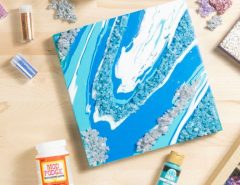Plasma spraying is a highly specialised technique that is used to coat a variety of surfaces. The process incorporates the use of a number of devices: a spray gun, a plasma gun, and a special anode nozzle. It also requires the use of an electrical charge and an external supply of the powdered coating.
A versatile technique
Plasma spray coatings are used by many sectors, such as the automotive, aerospace, medical and petrochemical industries. It is suitable for a wide variety of surfaces, including metal, ceramic, and some plastics.
You can learn more about the technique and the kind of commercial services available online or by consulting a surface engineering specialist such as poeton.co.uk/advanced-treatments/apticote-800-thermal-plasma-spray.
Image credit

The first phase
The first step in the process sees the substrate surface being preheated, with careful attention being paid to both the temperature reached and the duration of the heating process. This preheating offers a number of benefits, including a better adhesion of the coating to the substrate and reduced residual stress. This leads to the superior performance of the finished piece.
Next, the finely powdered form of the coating material is injected into a high-temperature plasma jet spray, where it is transformed into molten droplets. In this semi-fluid state, the coating particles are propelled onto the substrate, where they solidify on impact. This approach allows for precise control over the thickness of the coating in addition to enabling the coating of different materials.

Image credit
Controlling the coating
The thermal plasma spray method means there are several parameters that can be adjusted to create an ideal coating technique for every application. These parameters include the distance of the plasma spray from the substrate, the angle of the spray, and the traverse speed. The result is a tailored thickness to meet the specific requirements.
The final phase sees the substrate being properly cooled to set the microstructure and other properties of the applied coating. This also helps to ensure no cracks or imperfections occur, making it a vital part of the overall plasma coating process.




